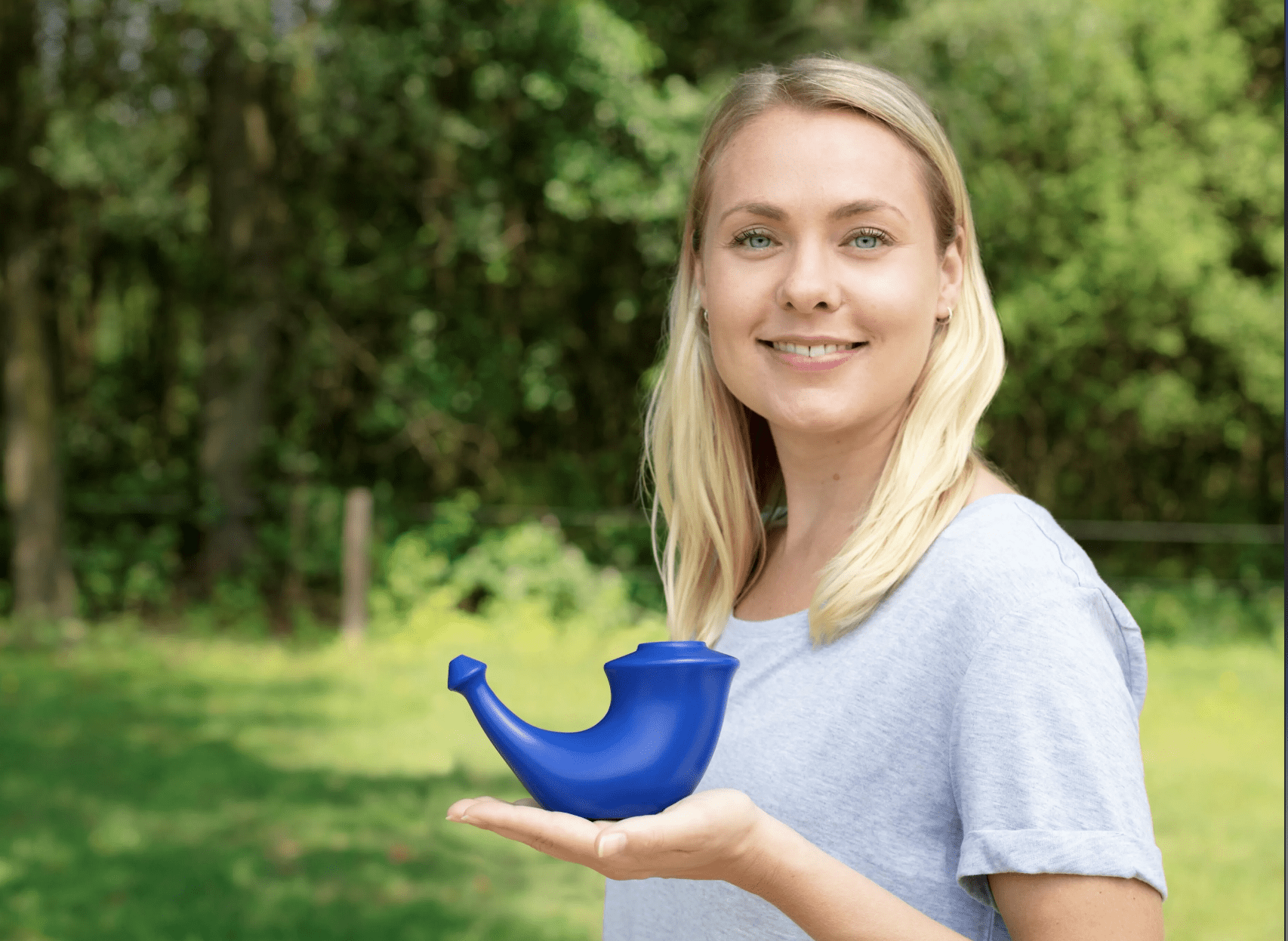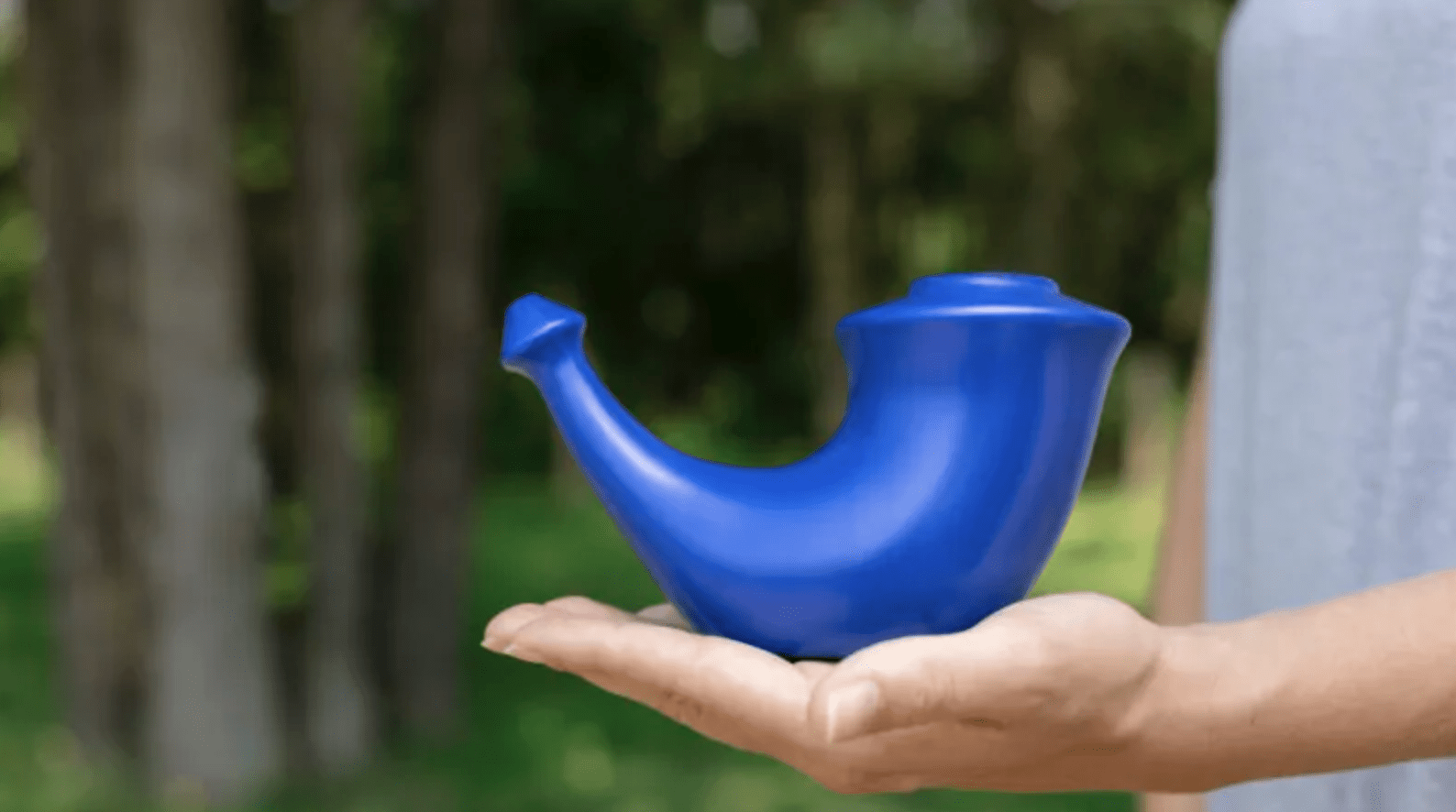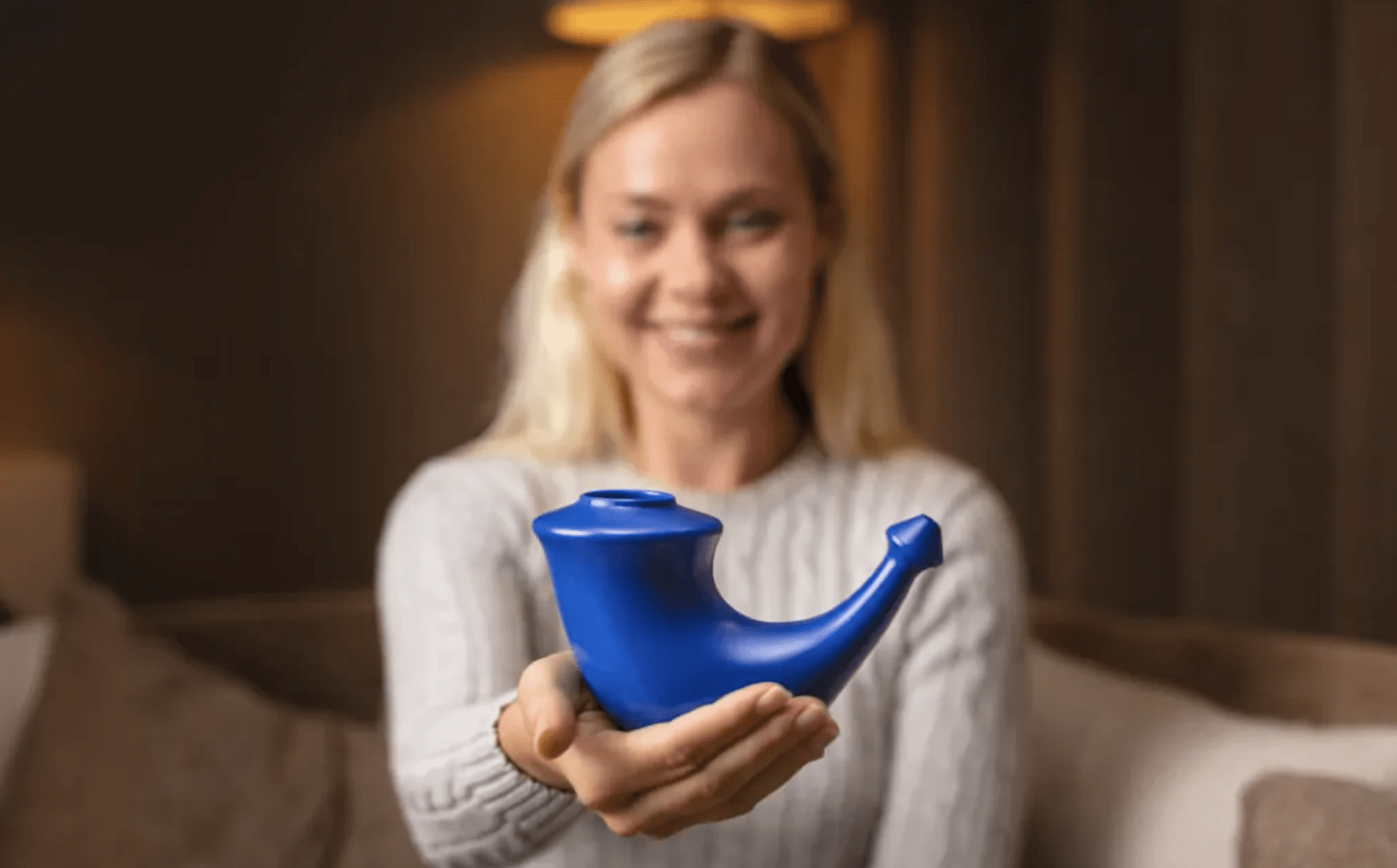Nasal irrigation, also known as nasal lavage or nasal douche, is a simple yet effective technique used to clean and moisturize the nasal passages. This practice has been used for thousands of years in Ayurvedic and Yoga cultures and has recently gained popularity in Western medicine as a natural remedy for various respiratory conditions. In this article, we will discuss the benefits of nasal irrigation and how it can improve your overall health and well-being.

Benefits of Nasal Irrigation
One of the main benefits of nasal irrigation is its ability to relieve nasal congestion and sinus pressure. When the nasal passages become blocked by mucus or allergens, it can lead to difficulty breathing and headaches. Nasal irrigation helps to flush out these irritants, allowing for easier breathing and relief from sinus pressure. Additionally, nasal irrigation can help to reduce the frequency and severity of sinus infections by removing bacteria and viruses from the nasal passages.
Another benefit of nasal irrigation is its ability to improve the overall health of the nasal passages. The nasal passages play a crucial role in the body's immune system by trapping harmful particles and preventing them from entering the lungs. However, when the nasal passages become dry or irritated, the mucus that lines the passages becomes thick and difficult to move, making it harder for the body to remove harmful particles. Nasal irrigation helps to keep the nasal passages moist and healthy by flushing out old, dried-out mucus and replacing it with fresh, clean saline solution.
Nasal irrigation can also be helpful for people with allergies or asthma. Allergies can cause inflammation in the nasal passages, leading to sneezing, itching, and nasal congestion. Nasal irrigation helps to reduce this inflammation by flushing out allergens and reducing the amount of mucus in the nasal passages. Similarly, asthma sufferers may find relief from nasal irrigation as it helps to clear the nasal passages, making it easier to breathe.

Lastly, nasal irrigation can be used as a preventative measure to maintain overall respiratory health. Regular use of nasal irrigation can help to keep the nasal passages clean and healthy, reducing the risk of infection and inflammation. It also helps to keep the sinuses clear, which can reduce the risk of sinus infections and headaches.
In conclusion, nasal irrigation is a simple yet effective technique that can provide numerous benefits for the respiratory system. Whether you are struggling with nasal congestion, sinus pressure, allergies, or asthma, nasal irrigation can help to relieve symptoms and improve overall respiratory health. It's easy to do at home with a saline solution and a nasal irrigation device, such as a neti pot or sinus rinse bottle.
#produkty#https://www.nanospace.store/nasal-wash/
Who Benefits from Nasal Lavage?
Incorporating nasal irrigation into your personal hygiene routine can bring numerous benefits for all individuals, but it is particularly effective for those with:
- nasal congestion and sinus pressure or sinus infections,
- allergies or hay fever or asthma,
- dry or irritated nasal passages.
It also helpful for people who:
- want to maintain overall respiratory health
- want to reduce the risk of infection and inflammation
- have a dry climate or live in an area with high air pollution
- work in a dusty or smoky environment
- have a cold or the flu
- have recently undergone nasal surgery or have a deviated septum or other structural issues in the nasal passages
- want to improve the sense of smell and taste
- People who have chronic rhinitis or rhinosinusitis or obstructive pulmonary disease (COPD)
- are looking for a natural remedy to improve their respiratory health.
When Flush the Nose?
The respiratory tracts are not only the gateways into the body for the air we breathe, but also for various microorganisms and foreign substances. Our immune system deals with most of these uninvited guests, but sometimes it is not enough for bacteria and allergens. In these cases, it is appropriate to give it a helping hand.
Flushing the nose with a saline solution is one way to eliminate the risk of infection and alleviate the symptoms of respiratory illnesses, such as the common cold, flu, or COVID-19. And it is also the only thing that works for so-called posterior rhinitis.
Flushing your nose can also help you quickly:
- alleviate the symptoms of allergic (hay fever) rhinitis,
- relieve posterior rhinitis,
- clean the nasal cavities from dust (for example, after a day spent on a construction site). Flushing the nose does not hurt. On the contrary, if you do it correctly, it is quite pleasant and mainly brings immediate relief.
- moisturize dry mucous membranes
- stimulate the activity of cilia (more actively remove mucus and foreign substances)
- relieve posterior rhinitis
- it also helps with sleep apnea treated with nasal positive pressure ventilation (CPAP - Continuous Positive Airway Pressure).

How Does Nasal Irrigation Work?
The process involves introducing a flow of saline solution into one nostril, allowing it to flow through the nasal passages, and then draining it out of the other nostril. The saline solution can be prepared at home by mixing salt and water or bought pre-made. The solution is poured into a device such as a neti pot, a squeeze bottle, or a pulsating device, and then is used to flush the nasal passages.
When the saline solution is introduced into the nasal passages, it works to loosen and remove mucus, dust, pollen, and other irritants that can cause congestion, allergies, and sinus infections. The solution also helps to moisturize the nasal passages, reducing dryness and inflammation.
How to Flush Your Nose
Flushing your nose is very simple, even 5-year-olds can do it. How to do it?
- Pour the pre-prepared solution from the sachet into the neti pot. Gently shake the neti pot to mix the solution well.
- Blow your nose to remove any mucus and dead cells before flushing.
- Lean forward slightly and place the nozzle of the neti pot against the left or right nostril, leaving the other nostril open.
- Gently tilt your head to the side so that the solution flows into the nostril. Allow the solution to flow out the other nostril.
- Repeat step 4 on the other nostril.
- Remove any excess solution by gently blowing your nose.
Note:
- There are special children's neti pots available, but always use them under adult supervision.
- If you're not comfortable with a neti pot, a saline spray may be suitable for you.
- Be sure to choose the right saline solution (isotonic or hypertonic) for your needs.
Proper Nasal Bulb Technique: What You Need to Know
- Proper application: Many people think that water should be sucked in or that they should tilt their head and pour it into their nose. This would only lead to choking. The neti pot is applied to the nose in a forward lean and on the side above the sink and the water flows out of the neti pot into the nose by itself with the help of gravity, where it rises into the cavities and soon starts to flow out of the other nostril.
- Breathing: When flushing, you breathe through your open mouth, so you don't have to worry about choking.
- Proper blowing: It is very important to know how to blow your nose properly. You should not blow your nose by blocking both nostrils at the same time, but always block only one nostril and blow very gently. Intensive blowing after flushing can lead to an unpleasant pushing of liquid into the Eustachian tube, causing ear pain.
Choose the Best Saline Solution for Your Neti Pot
There are two variations of saline solution available: Isotonic and Hypertonic. Let's examine both.
Isotonic Solution: A Gentle Solution for Cold Prevention, Mild Cold, and Allergies
Isotonic solution is a well-known and commonly used physiological solution, often used in hospitals. It has a similar concentration of salt as human cells (around 0.9%) and in addition to sodium chloride (table salt), it also contains sodium hydrogen carbonate, which helps to maintain the pH balance in the human body.
Isotonic solution is mainly used to clean and moisturize the mucous membrane. When you have a cold, it thins the mucus and makes it easier to blow your nose. Due to its gentle nature, it is also suitable for daily nasal hygiene and can be used safely and for a long period of time, even in small children and during pregnancy.
Research has shown that using an Isotonic solution for nasal irrigation can also be an effective prevention method against viral respiratory illnesses and sinus infections. A study conducted in 2004 found that volunteers who used a nasal spray with a saline solution were less likely to get sick and their symptoms lasted for almost half the time.
A Czech study also found that children who flushed their nose with an Isotonic solution used fewer means for moisturizing the mucous membrane and reducing fever, and took medication for a stuffy nose less frequently

Hypertonic Saline Solution Shortens COVID-19 Infection Period
Hypertonic saline solution contains a higher concentration of salt than what is found in our body's cells. When it comes into contact with mucous membranes, it begins to pull water out of the tissue in order to balance the salt concentration on both sides - this process is known as osmosis.
During a cold, we have swollen mucous membranes in our nose as a result of excessive water retention. Hypertonic saline solution helps to soothe this swelling, providing relief from the discomfort of a stuffy nose. It can also be used for the treatment of inflammation in the nasal and sinus cavities, even as an addition to prescribed medication.
One advantage of hypertonic saline solutions over medicated drops is that they don't create dependency. However, they should not be used for regular nasal hygiene, as they could dry out the mucous membranes in the nose.
A 2019 study conducted in the UK found that nasal rinses had an impact on the duration of respiratory illnesses, including those caused by coronaviruses. Patients who began rinsing their nose with hypertonic saline solution within 48 hours of the first symptoms had a shorter infection period, on average 1.9 days, compared to the control group. They also used significantly less over-the-counter medication, by 36%. The results of the study provide evidence that saline solution has antiviral effects across various types of respiratory viruses. This suggests that rinsing the nose with hypertonic saline solution may be an effective way to reduce the symptoms and duration of respiratory infections.
Differences between Isotonic and Hypertonic Solutions for Nasal Irrigation
Isotonic and hypertonic solutions are used for nasal lavage, which is a method of cleaning and moisturizing the nasal passages.
An isotonic solution is a solution that has the same salt concentration as the body's cells. It is similar to the body's natural salt balance. Isotonic solutions are typically used for routine nasal irrigation and can help to remove mucus and debris from the nose. They can also help to moisturize and soothe dry, irritated nasal passages.
A hypertonic solution is a solution that has a higher salt concentration than the body's cells. It is used to help dry out and shrink swollen nasal passages. Hypertonic solutions can be useful for people with chronic nasal congestion or inflammation, as they can help to reduce swelling and clear out mucus. They are also helpful for those who have sinus infections and allergies.
It's important to note that using hypertonic solutions too often, or using them too strong, can cause excessive dryness, irritation, and even bleeding of the nasal passages. It's best to use them as directed by a medical professional or according to the product's instructions.
The NeilMed Sinugator Nasal Spray Helps with Allergies and Cold
This medical device is intended for pulsating nasal irrigation Sinugator - NeilMed for allergies and hay fever or colds and flu. You can comfortably clean your nasal passages without burning in the nose.
Benefits of Sinugator - NeilMed medical device:
- Natural relief from symptoms of allergies, colds, and sinus congestion
- Soothing nasal irrigation, does not burn or sting
- Great for daily hydration and hygiene
- Can be used during pregnancy
Best Practice
How to Unclog a Stuffy Nose - Water not Flowing during Irrigation?
If you've decided to try nasal irrigation when you have a completely stuffy nose, the water may not want to flow at first. There are two ways to deal with this.You can either use a traditional nasal spray, wait five minutes, blow your nose, and try irrigation again, or use a hypertonic solution, place the nozzle to your nose, and wait until the water starts flowing on its own, as the salt solution will soften the mucous membranes. This process may take a few minutes. The water will initially flow slowly, until it flows normally. If you are starting irrigation when your nose is already congested, the process may be uncomfortable and take longer. However, once your nasal passages are cleared and the mucous membranes are no longer swollen, the nasal irrigation process will only take a maximum of two minutes. It's just a matter of perseverance.
How to Get Rid of Posterior Rhinorrhea with Neti Pot
Posterior rhinorrhea is a condition in which mucus runs down the back of the throat from the side nasal cavities, making it difficult to breathe through the nose. It often leads to coughing and throat irritation.The traditional method of using a nasal spray may not be effective in cleaning the mucous membrane thoroughly. However, using a neti pot to flush the nasal cavities with a saline solution can be an effective solution.
To flush the nasal cavities, lean forward slightly, place the nozzle of the neti pot against one nostril and gently tilt your head to the side. Allow the solution to flow out the other nostril and repeat the process on the other side. By plugging the lower hole with your finger, the water will start looking for the nearest "escape route" which is through the back of the throat, getting rid of the suffocating ropes of mucus and flowing out of the corner of the mouth. Although it may not be pleasant, it will provide relief. The flush works immediately and can provide peace for several hours.
What to Take Away From the Article?
Nasal irrigation reduces the risk of infection and relieves symptoms of respiratory illnesses, sinus congestion, and nasal inflammation. A saline solution and special nozzle or spray are used for nasal irrigation. In terms of health, it is better to buy ready-made solutions in sachets. When rinsing, it is important to bend forward, tilt the head to one side, and let the solution flow freely. An isotonic saline solution is suitable as a preventative measure against respiratory illnesses and for regular nasal hygiene. It also relieves mild colds and allergies. A hypertonic saline solution should only be applied for severe colds or flu. It helps to clear a stuffy nose and nasal passages."
Sources
- Effect of nasal lavage on nasal symptoms and physiology in wood industry workers
- A daily nasal spray with saline prevents symptoms of rhinitis
- Efficacy of isotonic nasal wash (seawater) in the treatment and prevention of rhinitis in children
- Nasal irrigation as an adjunctive treatment in allergic rhinitis: A systematic review and meta-analysis
- Efficacy of daily hypertonic saline nasal irrigation among patients with sinusitis: a randomized controlled trial
- Hypertonic saline nasal irrigation and gargling should be considered as a treatment option for COVID-19
- Simple nasal wash can prevent hospitalization and deaths from COVID-19
